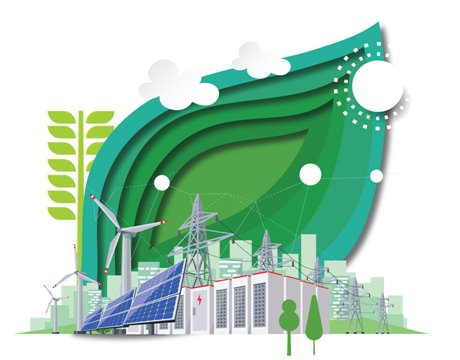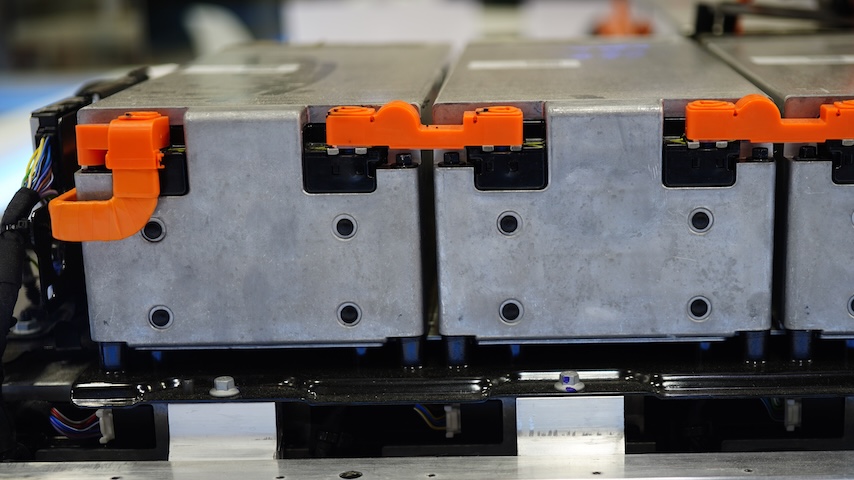Energy Blog: Invisible Heroes of Coronavirus Crisis
Energy Blog: Invisible Heroes of Coronavirus Crisis


In modern society, some of the most important people are the hardest to see.
Essayist and actor John Hodgman once asked a group of people which superpower they would choose: flight or invisibility. The choice, Hodgman thought, would shine a light on each person’s personality. Flight was heroic, invisibility was sneaky.
To my mind, though, some of the most heroic people—the ones who keep the lights on, the water flowing, who keep us comfortably warm or cold—are all but invisible. And they keep that cloak of invisibility through the modern-day camouflage of hardhats and steel-toed shoes.
I’m thinking of utility workers.
When pandemics sweep over, markets stumble, or natural disasters hit, the most critical people are those who keep our infrastructure operating. Politicians get a lot of the air time, but their guidance is hard to disseminate without operational electrical and telecommunications systems. Doctors and nurses are also front-line heroes, of course, but the biggest threat to public health has more to do with whether the water and wastewater systems are operating properly. If water systems fail, public health crises can spiral out of control.
Recommended for You: OSHA Guidelines for Engineers Working During the Coronavirus Pandemic
Utility workers are invisible because they are doing their jobs well. In a modern society, the best utilities are the ones we don’t think about. When we talk about a utility, it’s usually for negative reasons: the bills are too high, the service is unreliable, or its system sparked fires, spills, contaminations, or explosions. What utilities have made the news? PG&E, for the wildfires it sparked in California. The municipal water department in Flint, Mich., for the lead contamination in its supply. Sempra Energy, when its natural gas reservoirs at Aliso Canyon outside of Los Angeles leaked for months without stopping.
Those are the exceptions, though. Maybe 99 percent of the time, we don’t think about these services: clean water flows at the turn of a valve, wastewater tidily drains away, the lights shine at the flick of a switch, and the gas warms our homes, heats our water, or cooks our food. This is the way it should be.
When storms or other natural disasters pass through, it’s our utility workers who are critical personnel. At major holidays, the water and wastewater treatment plants don’t shut down. Broken water and sewer pipes can’t wait for repair. And power outages can’t be fixed next week. Usually, someone is away from their family taking care of those problems for us.
Recent events have brought this indispensability into sharp focus. The Covid-19 pandemic has forced many of us into work-from-home situations. And if most of us are honest, our jobs aren’t critical. If we didn’t show up to work one week, our immediate coworkers might notice, but the effects rarely cascade beyond that immediate circle.
In places where the pandemic has hit worst, only essential personnel are on duty: Medical professionals, first responders—and utility workers. They are hard at work in dangerous conditions, clearing debris, stringing lines, and putting themselves at risk to make our lives more comfortable.
Further Reading: Coronavirus Update: Engineers to the Rescue
Unfortunately, the utility space has a reputation for being a slow-moving industry. To hot-shot students, it doesn’t have the attractiveness of modern tech companies or the high-dollar payouts of investment banking. If our best and brightest don’t go into the utility sector, then we will eventually pay the price.
But this backward reputation is mostly unwarranted. The utility space is evolving with smarter platforms and more technology. It is where solutions based on machine learning and artificial intelligence will take root. It’s also a field relying on ubiquitous sensors and innovations to lower cost, reduce emissions, and improve safety and reliability—even in the face of more severe climate crises. That means our heroes will need more specialized training.
When younger workers say they want to work in cleantech, the utility sector is where the action is. We should all encourage our students, supervisees, children, and colleagues to take another look at the utility sector as a place of innovation and fulfillment.
We need to find a way of raising the profile of utility work. It is heroic, even if its heroes are best left unseen.
Michael E. Webber is the Josey Centennial Professor of Energy Resources at the University of Texas in Austin and Chief Science and Technology Officer at ENGIE, a global energy company headquartered in Paris. His latest book, Power Trip: The Story of Energy, was published by Basic Books.
To my mind, though, some of the most heroic people—the ones who keep the lights on, the water flowing, who keep us comfortably warm or cold—are all but invisible. And they keep that cloak of invisibility through the modern-day camouflage of hardhats and steel-toed shoes.
I’m thinking of utility workers.
When pandemics sweep over, markets stumble, or natural disasters hit, the most critical people are those who keep our infrastructure operating. Politicians get a lot of the air time, but their guidance is hard to disseminate without operational electrical and telecommunications systems. Doctors and nurses are also front-line heroes, of course, but the biggest threat to public health has more to do with whether the water and wastewater systems are operating properly. If water systems fail, public health crises can spiral out of control.
Recommended for You: OSHA Guidelines for Engineers Working During the Coronavirus Pandemic
Utility workers are invisible because they are doing their jobs well. In a modern society, the best utilities are the ones we don’t think about. When we talk about a utility, it’s usually for negative reasons: the bills are too high, the service is unreliable, or its system sparked fires, spills, contaminations, or explosions. What utilities have made the news? PG&E, for the wildfires it sparked in California. The municipal water department in Flint, Mich., for the lead contamination in its supply. Sempra Energy, when its natural gas reservoirs at Aliso Canyon outside of Los Angeles leaked for months without stopping.
Those are the exceptions, though. Maybe 99 percent of the time, we don’t think about these services: clean water flows at the turn of a valve, wastewater tidily drains away, the lights shine at the flick of a switch, and the gas warms our homes, heats our water, or cooks our food. This is the way it should be.
When storms or other natural disasters pass through, it’s our utility workers who are critical personnel. At major holidays, the water and wastewater treatment plants don’t shut down. Broken water and sewer pipes can’t wait for repair. And power outages can’t be fixed next week. Usually, someone is away from their family taking care of those problems for us.
Recent events have brought this indispensability into sharp focus. The Covid-19 pandemic has forced many of us into work-from-home situations. And if most of us are honest, our jobs aren’t critical. If we didn’t show up to work one week, our immediate coworkers might notice, but the effects rarely cascade beyond that immediate circle.
In places where the pandemic has hit worst, only essential personnel are on duty: Medical professionals, first responders—and utility workers. They are hard at work in dangerous conditions, clearing debris, stringing lines, and putting themselves at risk to make our lives more comfortable.
Further Reading: Coronavirus Update: Engineers to the Rescue
Unfortunately, the utility space has a reputation for being a slow-moving industry. To hot-shot students, it doesn’t have the attractiveness of modern tech companies or the high-dollar payouts of investment banking. If our best and brightest don’t go into the utility sector, then we will eventually pay the price.
But this backward reputation is mostly unwarranted. The utility space is evolving with smarter platforms and more technology. It is where solutions based on machine learning and artificial intelligence will take root. It’s also a field relying on ubiquitous sensors and innovations to lower cost, reduce emissions, and improve safety and reliability—even in the face of more severe climate crises. That means our heroes will need more specialized training.
When younger workers say they want to work in cleantech, the utility sector is where the action is. We should all encourage our students, supervisees, children, and colleagues to take another look at the utility sector as a place of innovation and fulfillment.
We need to find a way of raising the profile of utility work. It is heroic, even if its heroes are best left unseen.
Michael E. Webber is the Josey Centennial Professor of Energy Resources at the University of Texas in Austin and Chief Science and Technology Officer at ENGIE, a global energy company headquartered in Paris. His latest book, Power Trip: The Story of Energy, was published by Basic Books.





